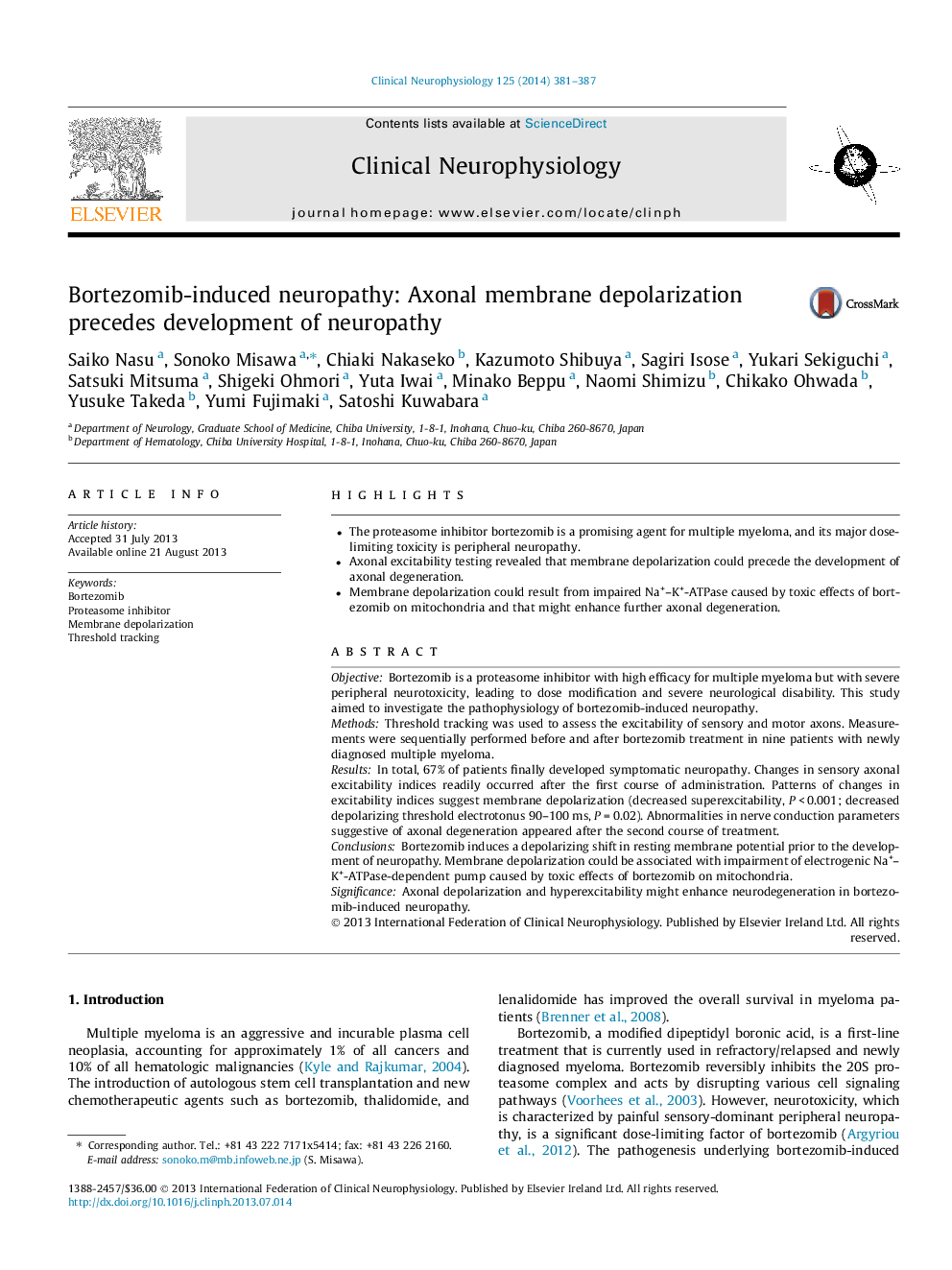| Article ID | Journal | Published Year | Pages | File Type |
|---|---|---|---|---|
| 3044408 | Clinical Neurophysiology | 2014 | 7 Pages |
•The proteasome inhibitor bortezomib is a promising agent for multiple myeloma, and its major dose-limiting toxicity is peripheral neuropathy.•Axonal excitability testing revealed that membrane depolarization could precede the development of axonal degeneration.•Membrane depolarization could result from impaired Na+–K+-ATPase caused by toxic effects of bortezomib on mitochondria and that might enhance further axonal degeneration.
ObjectiveBortezomib is a proteasome inhibitor with high efficacy for multiple myeloma but with severe peripheral neurotoxicity, leading to dose modification and severe neurological disability. This study aimed to investigate the pathophysiology of bortezomib-induced neuropathy.MethodsThreshold tracking was used to assess the excitability of sensory and motor axons. Measurements were sequentially performed before and after bortezomib treatment in nine patients with newly diagnosed multiple myeloma.ResultsIn total, 67% of patients finally developed symptomatic neuropathy. Changes in sensory axonal excitability indices readily occurred after the first course of administration. Patterns of changes in excitability indices suggest membrane depolarization (decreased superexcitability, P < 0.001; decreased depolarizing threshold electrotonus 90–100 ms, P = 0.02). Abnormalities in nerve conduction parameters suggestive of axonal degeneration appeared after the second course of treatment.ConclusionsBortezomib induces a depolarizing shift in resting membrane potential prior to the development of neuropathy. Membrane depolarization could be associated with impairment of electrogenic Na+–K+-ATPase-dependent pump caused by toxic effects of bortezomib on mitochondria.SignificanceAxonal depolarization and hyperexcitability might enhance neurodegeneration in bortezomib-induced neuropathy.
